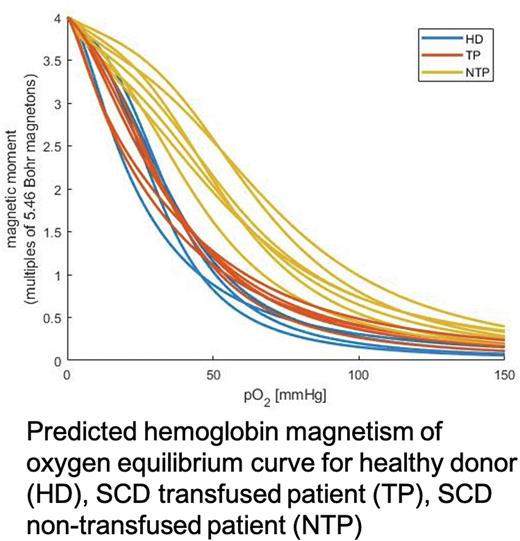Abstract
Anemias are a broad classification of red blood cell (RBC) disorders which effectively result in inadequate oxygen transport in the body. Sickle Cell Disease (SCD) results from a point mutation in hemoglobin, and the hemoglobin-oxygen equilibrium becomes right shifted (i.e., SCD RBCs do not oxygen saturate to the same degree as healthy RBCs). RBC exchange transfusion is a common clinical practice to increase the oxygen carrying capacity of a SCD patient - a process by which the patient's own RBCs are exchanged with healthy donor blood. During this process, large amounts of donor RBCs are discarded along with the patients SCD RBCs. Here we present a new RBC separation modality based on hemoglobin-oxygen equilibrium.It is well known that RBCs become magnetized as a function of the oxygen saturation of its hemoglobin. Due to the difference in hemoglobin-oxygen equilibrium for healthy and SCD RBCs we demonstrate a magnetic method of fractionating RBCs based on oxygen saturation. In our study, we use the SCD transfusion waste product and sort this sample into healthy fractions and SCD fractions using a field flow permeant magnetic separator. Under variable oxygen tension of the sample, we preformed the magnetic sorting.By incorporation of magnetic separation into RBC exchange processes, more efficient selection, and removal of SCD RBCs can be accomplished.
Disclosures
Desai:Forma: Consultancy; Novartis: Research Funding, Speakers Bureau; Vertex: Consultancy.
Author notes
Asterisk with author names denotes non-ASH members.


This feature is available to Subscribers Only
Sign In or Create an Account Close Modal